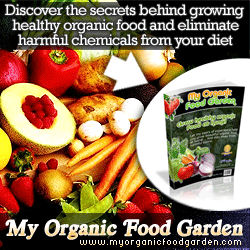 Soil preparation is one of the most important steps in grow a healthy and productive crop of any kind. Soil is the key to organic gardening, and the crops you grow will only be as healthy as the soil they are grown in.
Soil preparation is one of the most important steps in grow a healthy and productive crop of any kind. Soil is the key to organic gardening, and the crops you grow will only be as healthy as the soil they are grown in.
The first step in preparing any soil is to know what you are working with – clay, loam, sand, silt, or a combination of one or more of these types of soil. Doing a simple jar test at home or having your soil tested by a local Cooperative Extension is the only way you will know what you are dealing with. Cooperative Extension Services normally will advise you on how to improve your soil once they test it.
Once the ground can be worked in the early spring, loosen a small area of your garden to a depth of about 8 – 10 inches to check the moisture content of the soil – this can simply be done with a shovel or spading fork. If the soil is saturated with moisture from either snow melt or rain, it is too wet for working. A simple test is to take a handful of soil and squeeze it into a ball. If the ball of soil can be easily be broken by a gentle poke of your index finger, it is dry enough to be worked. Once you have thoroughly worked the soil, it should be loose and free of clumps.
If you are starting a garden in an area that previously was a lawn or turf areas, remove any clumps of sod and put them in your compost area, or turn them over and expose their root system toward the sun to dry out. This will help prevent any grass areas from taking over your garden.
Plant life and seeds both need oxygen to survive, and the only way they can get this is with a soil that has a healthy structure. A good soil structure is one that will retain moisture and nutrients, and drain well at the same time. Amending soil with organic matter will greatly improve the structure, and create an environment that will greatly benefit the microorganisms that live under the surface of your garden. This all needs to be attended to before you start any type of planting; once seeds or any type of plant life has been planted in your garden, there is little you can do to improve the soil structure.
If your garden soil is like most gardens, less than perfect, you need to improve it. The healthier the soil is in your garden, the healthier the crops will be that you are growing. Organic matter is the key to improving an organic gardens soil structure, compost being the ideal choice. When organic matter is added to a sandy soil, it acts like a glue to hold the soil particles together, and when added to a clay soil, it works just the opposite. With clay soil, organic matter gets between soil particles and loosens the soil to allow air and water to reach the root systems of plants. Any time there are no crops growing in your garden is the ideal time to amend the soil with organic matter, it doesn’t matter what time of the year or season it is.
One of the most overlooked parts of a soil is the pH level. This is the degree of acidity or alkalinity of the soil. This is a simple test that can be done yourself with a test kit that can be purchased at most garden center. Once you have the results of the test, it will indicate the present level of pH. If the results show levels that are out of an acceptable range for the crops you are growing, the addition of lime or sulfur will bring the soil into the proper range for growing your crops. Lime will neutralize the soils pH, and sulfur will make it more acidic.
A environment friendly and healthy way of gardening. Organic Gardening is away of gardening in harmony with nature. Growing a healthy and productive crop in a way that is healthier for both you and the environment [http://www.organicheirloomgardening.com/waterandsoil.html].
John Yazo
[http://www.organicheirloomgardening.com]
Article Source: http://EzineArticles.com/?expert=John_Yazo

Speak Your Mind